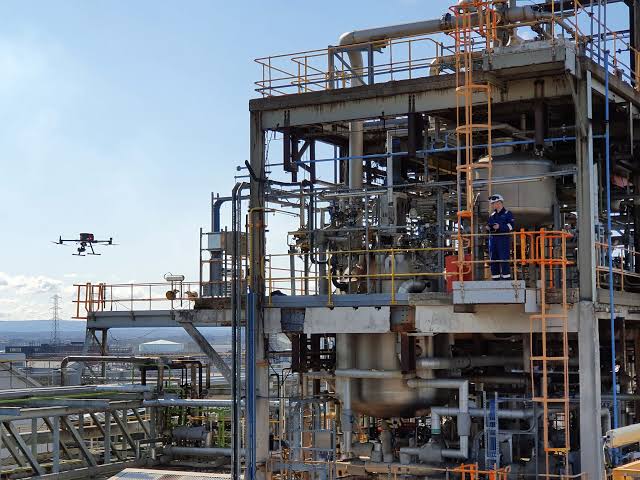In today’s rapidly evolving industrial landscape, legacy industries such as manufacturing, mining, and oil and gas are facing increased pressure to modernize their processes while maintaining strict safety and regulatory standards. One of the most critical areas in which these industries must innovate is risk assessment. Traditional risk assessment methods often rely on paper-based systems or outdated technology, which can lead to inefficiencies, errors, and heightened risk exposure. Fortunately, modern inspection software is transforming the way risk assessments are conducted, making the process more efficient, accurate, and comprehensive.
This blog will explore how inspection software simplifies risk assessment for legacy industries, the key features to look for in inspection software, and the benefits of transitioning to digital solutions.
Challenges of Risk Assessment in Legacy Industries
Legacy industries have long been characterized by their reliance on established, often manual processes. These industries have historically been resistant to change, largely due to the perceived costs and complexities of modernization. However, the growing complexity of regulatory requirements, the need for enhanced safety protocols, and the pressure to reduce operational risks have made it clear that traditional methods of risk assessment are no longer sufficient.
Some of the key challenges that legacy industries face with traditional risk assessment methods include:
- Inefficiency: Paper-based systems or outdated software often require a significant amount of time to complete inspections, compile data, and generate reports.
- Human Error: Manual data entry and record-keeping can lead to mistakes, which may cause inaccurate risk assessments and compromise safety.
- Limited Real-Time Data: Traditional methods typically do not allow for real-time data collection and analysis, which limits the ability to identify emerging risks in a timely manner.
- Compliance Challenges: Keeping up with constantly changing industry regulations can be difficult, especially when relying on outdated systems.
- Lack of Integration: Many legacy systems do not integrate well with other business processes, making it difficult to have a unified view of risk management across an organization.
These challenges underscore the need for a modern approach to risk assessment, one that leverages advanced technologies to streamline processes and improve outcomes.
How Inspection Software Transforms Risk Assessment
Inspection software has emerged as a powerful tool that addresses the inefficiencies and risks associated with traditional methods. By digitizing and automating key aspects of the risk assessment process, inspection software makes it easier for legacy industries to manage risk, ensure compliance, and maintain safety.
Here’s how inspection software transforms the risk assessment process:
Automation of Data Collection and Analysis
One of the primary advantages of inspection software is its ability to automate the data collection process. Rather than relying on paper forms or manual data entry, inspectors can use mobile devices to collect data directly in the field. This data can then be uploaded instantly to a centralized system, where it can be analyzed in real-time. Automation reduces the chances of human error and ensures that all relevant data is captured and recorded accurately.
Real-Time Reporting and Analytics
Inspection software enables real-time reporting and analytics, allowing decision-makers to access up-to-date information about the risks facing their organization. This is particularly important for legacy industries, where emerging risks—such as equipment failures or environmental hazards—need to be addressed quickly to prevent costly incidents. Real-time analytics can identify trends, flag potential risks, and provide insights that help organizations make informed decisions.
Improved Compliance Management
Keeping up with regulatory requirements is a significant challenge for legacy industries, and failing to comply can result in costly penalties or operational shutdowns. Inspection software simplifies compliance management by keeping track of regulatory changes and ensuring that inspections are conducted in line with the latest standards. In addition, many inspection software solutions offer built-in compliance templates that can be customized to meet industry-specific requirements.
Enhanced Collaboration and Communication
Inspection software facilitates better collaboration between different teams, departments, and locations. When inspectors, safety officers, and other stakeholders have access to a centralized platform, they can communicate more effectively and share data in real time. This ensures that everyone is on the same page when it comes to identifying and addressing risks.
Customizable Risk Assessment Templates
Every legacy industry has its own set of unique risks, and inspection software allows organizations to create customizable templates that align with their specific needs. These templates can be tailored to the type of inspection being conducted, the equipment or processes being assessed, and the regulatory requirements that must be met. This level of customization makes risk assessments more thorough and relevant to the industry in question.
Integration with Existing Systems
One of the key benefits of modern inspection software is its ability to integrate with existing enterprise systems, such as Enterprise Resource Planning (ERP) software, safety management systems, and environmental monitoring platforms. By integrating inspection software with these systems, legacy industries can create a more holistic view of risk management, enabling them to respond to issues more effectively.
Key Features to Look for in Inspection Software
When selecting inspection software to improve risk assessment processes, legacy industries should consider the following key features:
- Mobile Accessibility: The ability to conduct inspections using mobile devices (smartphones, tablets) is essential for ensuring that inspectors can collect data efficiently in the field.
- Cloud-Based Data Storage: Cloud-based storage ensures that inspection data is securely stored and easily accessible from any location, which is especially important for organizations with multiple facilities.
- Customizable Forms and Templates: Customization options are critical for ensuring that the software meets the unique needs of the industry and the specific risks being assessed.
- Real-Time Data Analysis: Real-time data analysis and reporting features allow organizations to monitor risks as they emerge and respond quickly to potential issues.
- Integration Capabilities: Integration with other business systems is essential for creating a unified risk management approach across the organization.
- Regulatory Compliance Tools: Built-in tools for managing compliance with industry regulations ensure that organizations remain in good standing with regulatory authorities.
- Automated Reporting: Automated report generation reduces the time and effort required to compile data and present findings to stakeholders.
- User-Friendly Interface: The software should be intuitive and easy to use, with minimal training required for inspectors and other personnel.
Benefits of Digital Inspection Solutions for Risk Assessment
Transitioning from traditional, manual risk assessment methods to digital inspection software provides a host of benefits, including:
- Increased Efficiency: Automating data collection, analysis, and reporting reduces the time required to complete inspections, allowing organizations to focus more on mitigating risks.
- Improved Accuracy: Digital solutions reduce the likelihood of human error, ensuring that risk assessments are more accurate and reliable.
- Enhanced Safety: Real-time data collection and analysis enable organizations to identify potential safety hazards more quickly, preventing accidents and minimizing risk.
- Cost Savings: By streamlining the risk assessment process and reducing the likelihood of costly incidents, digital inspection solutions can result in significant cost savings over time.
- Better Compliance: Inspection software makes it easier to keep up with changing regulatory requirements, reducing the risk of non-compliance and the associated penalties.
- Scalability: Digital solutions can easily scale to meet the needs of organizations of any size, making them ideal for legacy industries with multiple locations or large workforces.
Conclusion: The Future of Risk Assessment in Legacy Industries
As legacy industries face increasing pressure to modernize, adopting digital solutions like inspection software is becoming essential for effective risk management. By streamlining the risk assessment process, improving accuracy, and enhancing compliance, inspection software helps legacy industries stay competitive in an evolving marketplace while maintaining the highest standards of safety.
The shift from manual to digital risk assessment is not just a technological upgrade—it’s a transformation that will help legacy industries navigate the complexities of today’s regulatory environment and ensure long-term success. With the right inspection software, organizations can make risk assessment faster, easier, and more effective, ultimately reducing operational risks and improving overall efficiency.











